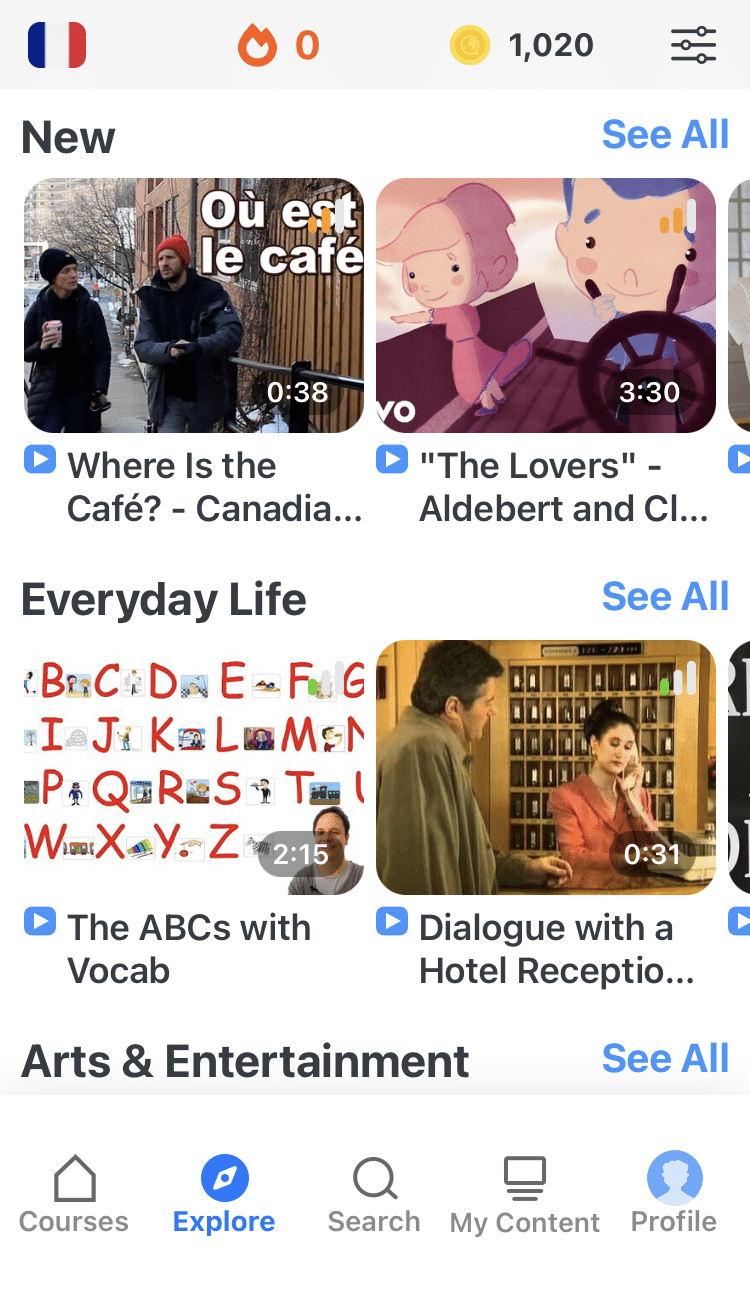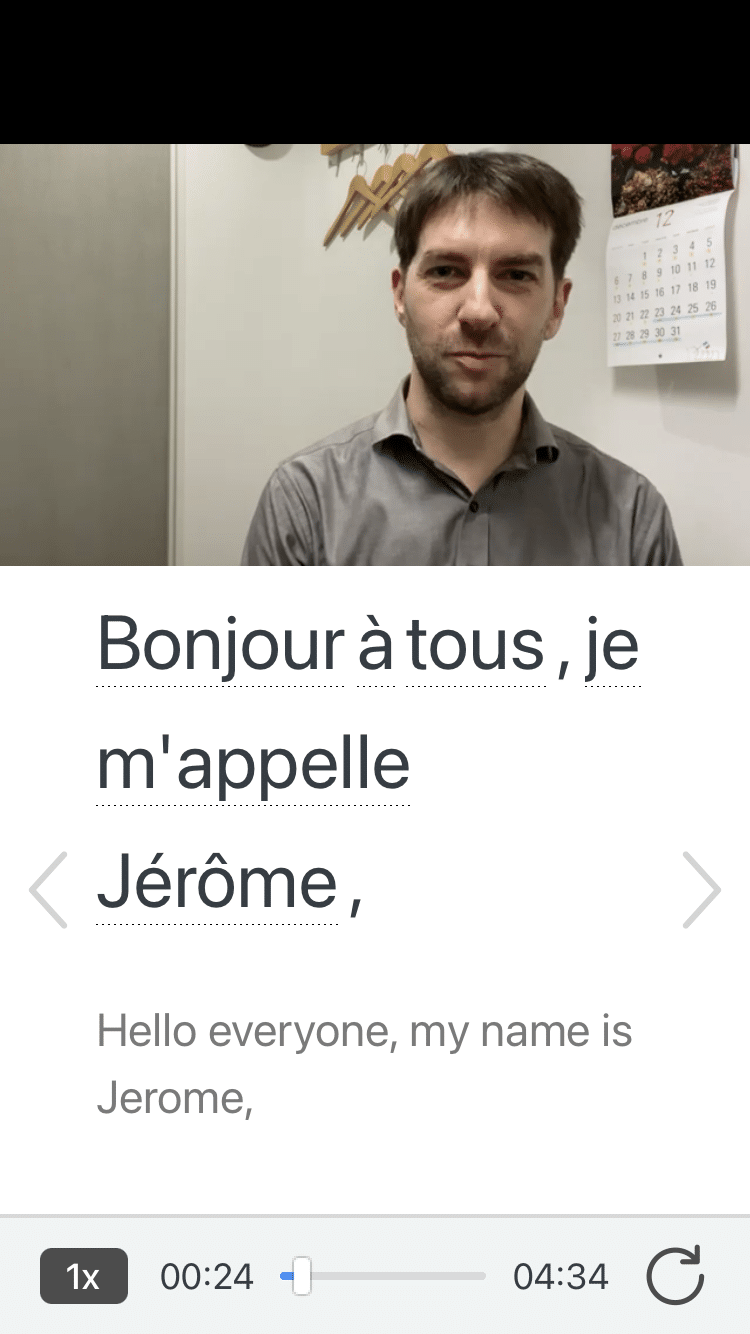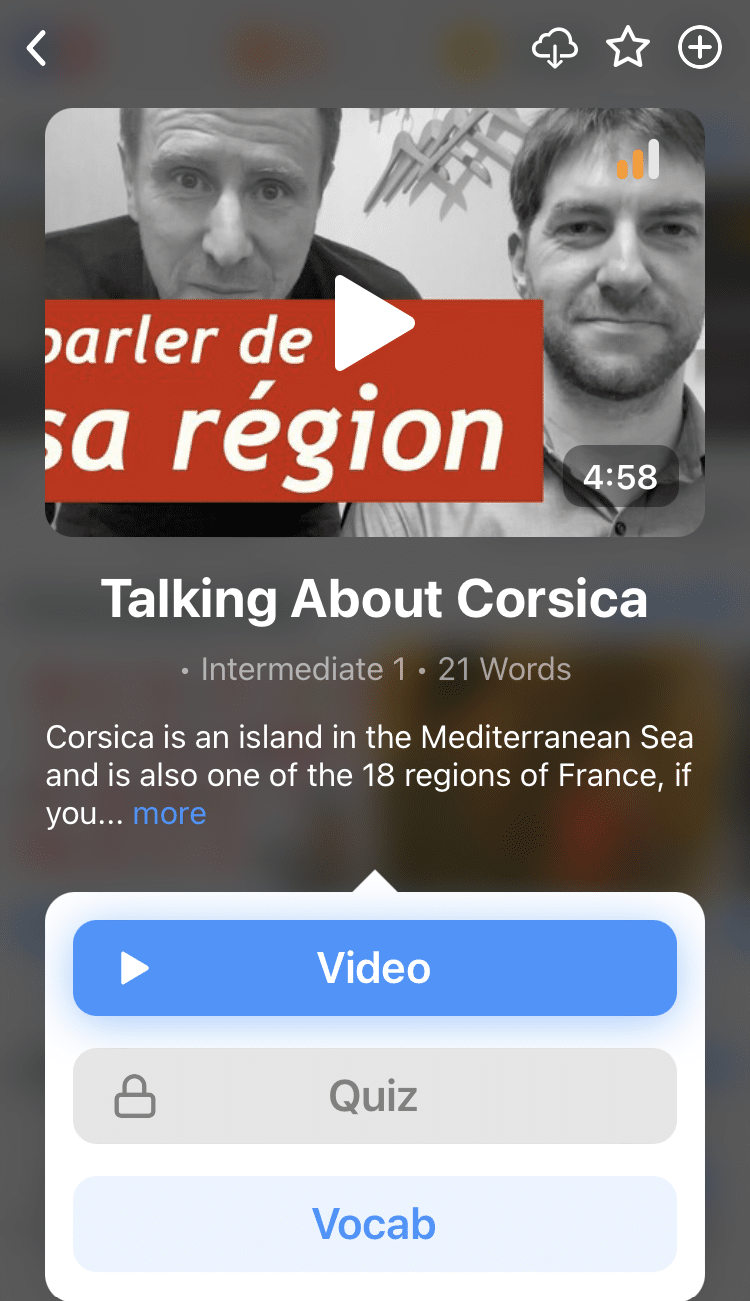
The French Imperfect Tense
Get a hold of your hat, because I’m about to blow your mind and tell you that there’s another way besides the perfect tense to talk about the past in French.
The imperfect tense by itself is crucial for talking about way-back-when, but is also a gateway drug to other tenses (the conditional and the pluperfect, just to name a few).
So to make this perfectly simple… er, uhm, imperfectly simple, we’ll go through this nice and easy.
Contents
- The Building Blocks of the Imperfect Tense
- When to Use the French Imperfect Tense
- Mixing the French Imperfect with Other Tenses
- How To Practice the French Imperfect Tense
- And one more thing...
Download: This blog post is available as a convenient and portable PDF that you can take anywhere. Click here to get a copy. (Download)
The Building Blocks of the Imperfect Tense
Pay close attention, because this is a tense that will not quit. You’ll hear it in movies, literature and just about any conversation.
Before we get into the semantics of the imperfect tense, let’s get through the easiest part: forming it. Luckily, for those of you who are already hiding under your desk from PTSD from forming the perfect tense, the imperfect is not a compound tense and has way way way fewer irregular verbs than the perfect. So come out of there, will ya?
French verb stems
First, let’s remember that the stems are just what we derive from the verb before we add the ending. For the verbs that aren’t irregular and rebellious, we simply use the nous form of the verb and drop the –ons at the end. Like so…
| Verb | Nous Form | Stem |
|---|---|---|
| Parler (to speak) | parlons | parl- |
| Finir (to finish) | finissons | finiss- |
| Prendre (to take) | prenons | pren- |
| être (to be) | sommes | ét- |
If you know the nous form of any verb, then you know the stem if you chop off the –ons. That’s good news if your present tense conjugations are fresh, and bad news if that’s not your strong suit.
The only irregular stem is that for être (this verb is always getting into trouble). This is because of its nous form (sommes), and there’s no doing anything with that.
They’re ready, they’re waiting, they’re in the imperfect terminal and ready for those endings!
French imperfect tense endings
The easy part: all you need to do is memorize the endings and we’re there. Add the verb stems we talked about earlier, and voilà ! We’ve got the imperfect tense:
| French Imperfect Tense Endings | Example Sentences |
|---|---|
| Je -ais | Je parlais (I was speaking) |
| Tu -ais | Tu finissais (You were finishing) |
| Il -ait | Il prenait (He was taking) |
| Elle -ait | Elle sautait (She was jumping) |
| Nous -ions | Nous choisissions (We were choosing) |
| Vous -iez | Vous disiez (You were saying) |
| Ils -aient | Ils marchaient (They were walking) |
| Elles -aient | Elles conduisaient (They were driving) |
Things to keep in mind
As you’ve seen, when forming the imperfect, you’ve got two parts: your nous stem and your endings. You probably think you have the stem thing on lock right now, since it’s just the nous form—for every verb but être, but make sure you’re confident with those spellings.
Take étudier (to study) for example, the nous form is étudions . So what? You ask.
Well, that would make the stem étudi- (careful, not étud-). If our stem is étudi-, when we mix in part two (our endings) then we’re stuck with:
J’étudiais (I was studying)
Tu étudiais (You were studying)
Il étudiait (He was studying)
Elle étudiait (She was studying)
Nous étudiions (We were studying)
Vous étudiiez (You were studying)
Ils étudiaient (They were studying)
Elles étudiaient (They were studying)
Did you catch it? There’s an “ii” in there, which is disturbing to look at for some, but yes, you are forming this correctly, even if it is funny looking.
In addition, watch out for verbs that end with -cer or –ger. The nous form of these verbs have pesky little spelling changes in the present tense:
| Verb | Nous Form | Stem |
|---|---|---|
| Commencer (to start) | commençons | commenç- |
| Nager (to swim) | nageons (with an e) | nage- |
Apart from the nous conjugations you have to keep an eye out for, you fair pretty well with this tense, don’t you? Only one irregular verb compared to the daunting amount of irregular verbs the perfect tense burdens us with.
When to Use the French Imperfect Tense
So when the heck do we use this anyway? Well, to start, it’s not interchangeable with the perfect tense, despite both of them being past tenses. The imperfect tense has many uses, so we’ll just tick them off one by one, nice and easy.
When the amount of time is vague
This is perhaps the most general rule of its usage.
Think of the perfect tense as something that happened at a definite moment, perfect because the action had a beginning and an end.
With the imperfect tense, it’s something that happened and happened for an undetermined amount of time. It happened in an imperfect amount of time, a.k.a. undefined.
This will come more into play when we start mixing our tenses together.
You’re describing how something looked or felt
Let’s say you’re weaving a story about your past—lots of details and descriptions because you’re fancy. When you’re describing how things looked or how you felt, you use the imperfect tense:
Quand j’étais petite, ma maison était verte. J’avais peur des monstres sous mon lit.
(When I was young, my house was green. I was scared of the monsters under my bed).
Since you’re describing things in the past and your emotions, you would use the imperfect tense (think back to the first usage rule: the house was green for an indeterminable amount of time). Think of the imperfect tense as the setting; you’re creating the background for a story as you speak about the past.
You’re wishing upon a star
This will mix in with our conditional tense later on, but if you’re expressing a wish using si (if), then you will want to use the imperfect tense:
Si seulement j’avais beaucoup d’argent ! (If only I had a lot of money!)
It can also be used in the case of a suggestion, as in “How about we…”
Si nous allions au cinéma ? (How about we go to the movies?)
With certain special phrases
If you use the phrase “ être en train de “ (to be in the middle of) and are talking about the past, you would use the imperfect tense:
J’étais en train de sortir. (I was in the middle of leaving).
Also, using venir de in the past takes the imperfect. This phrase is essentially the equivalent of “just had.”
Nous venions de déjeuner. (We just had lunch).
Mixing the French Imperfect with Other Tenses
Some tenses mix like peanut butter and jelly or Nutella and French bread (if we’re staying culturally accurate). Some do not. Don’t just go putting your peanut butter (the imperfect tense) with onions!
With the perfect tense
You will use the imperfect tense with the perfect tense the most often. In fact, the imperfect tense acts as a great set-up for the perfect tense in many cases.
Think of it this way: your imperfect tense is moseying along, happening and happening for an undetermined amount of time then BAM, something else happens. That something else is the perfect tense.
Here are a few examples:
Je regardais la télévision quand un singe est apparu dans ma chambre.
(I was watching the TV when a monkey appeared in my room.)
Je mangeais une tarte quand j’ai trouvé une clé dans ma part.
(I was eating a pie when I found a key in my slice.)
Je suis tombé quand je courais.
(I fell when I was running.)
If you aren’t certain whether you’re using the tenses correctly, translate it to English and see how it sounds. Both of these tenses translate well into English most of the time. You wouldn’t say: I was eating a pie when I was finding a key in my slice. That doesn’t mean what you are trying to say.
Remember: the perfect tense, because she’s a prissy perfectionist, interrupts the imperfect tense (so rude!).
With the imperfect subjunctive
RED ALERT: If you’re a beginner, you can skip over this section. You won’t be missing out on vital information, I promise. Intermediate and advanced learners may want to stick around just to get the whole gamut of French grammar!
If you aren’t familiar with the subjunctive, stop what you’re doing and get familiar, because it’s important.
Good? Got it? At least the gist? Then here we go…
The imperfect subjunctive is a literary tense, much like the past simple, which means you only need to know how to recognize it. You’d only need to know how to write it if you plan on writing French literature.
The imperfect subjunctive is used to express the subjunctive mood in the past. If your main clause is in the imperfect tense, you’ll have to use the imperfect subjunctive in the clause following que.
Like so:
Il était content que nous aimassions son gâteau.
(He was happy that we liked his cake).
Until you’re ready to dive deep into the depths of literature, that’s about as much as you need to know. Lucky you, because it’s not the easiest fish to fry as far as conjugations go. Though, it’s important to know all of the places you can expect to see the imperfect.
With the conditional
Ah, back to those wishes and wants. Good old si sentences. There are three different types, but we’ll concentrate on our new friend, the imperfect, in this post.
In imperfect + conditional si clauses, you’re expressing something that would happen if something else happened. It usually expresses things that are unlikely. Fat chance. Yeah right. Don’t get your hopes up.
For example:
Si j’avais un milliard d’euros, j’achèterais deux maisons.
(If I had a million euros, I would buy two houses.)
Nous serions amis si tu étais plus gentil.
(We would be friends if you were nicer.)
Tip: The imperfect and the conditional use the same endings. So if you are feeling particularly ambitious right now, the conditional is a great tense to learn in conjunction with the imperfect!
FluentU takes authentic videos—like music videos, movie trailers, news and inspiring talks—and turns them into personalized language learning lessons.
You can try FluentU for free for 2 weeks. Check out the website or download the iOS app or Android app.
P.S. Click here to take advantage of our current sale! (Expires at the end of this month.)
How To Practice the French Imperfect Tense
It’s recommended that you practice the imperfect tense by seeing how it’s used in context. That way, you can really get a hang of how this tense is realistically used in different situations.
For this, you can check out authentic French content, the kind of stuff made for and by native speakers. Authentic French content can be French books, podcasts on Spotify or videos on YouTube—for anything you consume, see if you can spot instances of the tense.
Your imperfect usage may not be perfect at first (Get it? Get it?), but it’s a tense that will lurk around and beg to be used for the entire duration of your French learning experience. Now you know where you’ll see it, when you’ll use it and (the easiest part) how to form it.
Download: This blog post is available as a convenient and portable PDF that you can take anywhere. Click here to get a copy. (Download)
And one more thing...
If you like learning French on your own time and from the comfort of your smart device, then I'd be remiss to not tell you about FluentU.
FluentU has a wide variety of great content, like interviews, documentary excerpts and web series, as you can see here:

FluentU brings native French videos with reach. With interactive captions, you can tap on any word to see an image, definition and useful examples.

For example, if you tap on the word "crois," you'll see this:

Practice and reinforce all the vocabulary you've learned in a given video with learn mode. Swipe left or right to see more examples for the word you’re learning, and play the mini-games found in our dynamic flashcards, like "fill in the blank."

All throughout, FluentU tracks the vocabulary that you’re learning and uses this information to give you a totally personalized experience. It gives you extra practice with difficult words—and reminds you when it’s time to review what you’ve learned.
Start using the FluentU website on your computer or tablet or, better yet, download the FluentU app from the iTunes or Google Play store. Click here to take advantage of our current sale! (Expires at the end of this month.)



